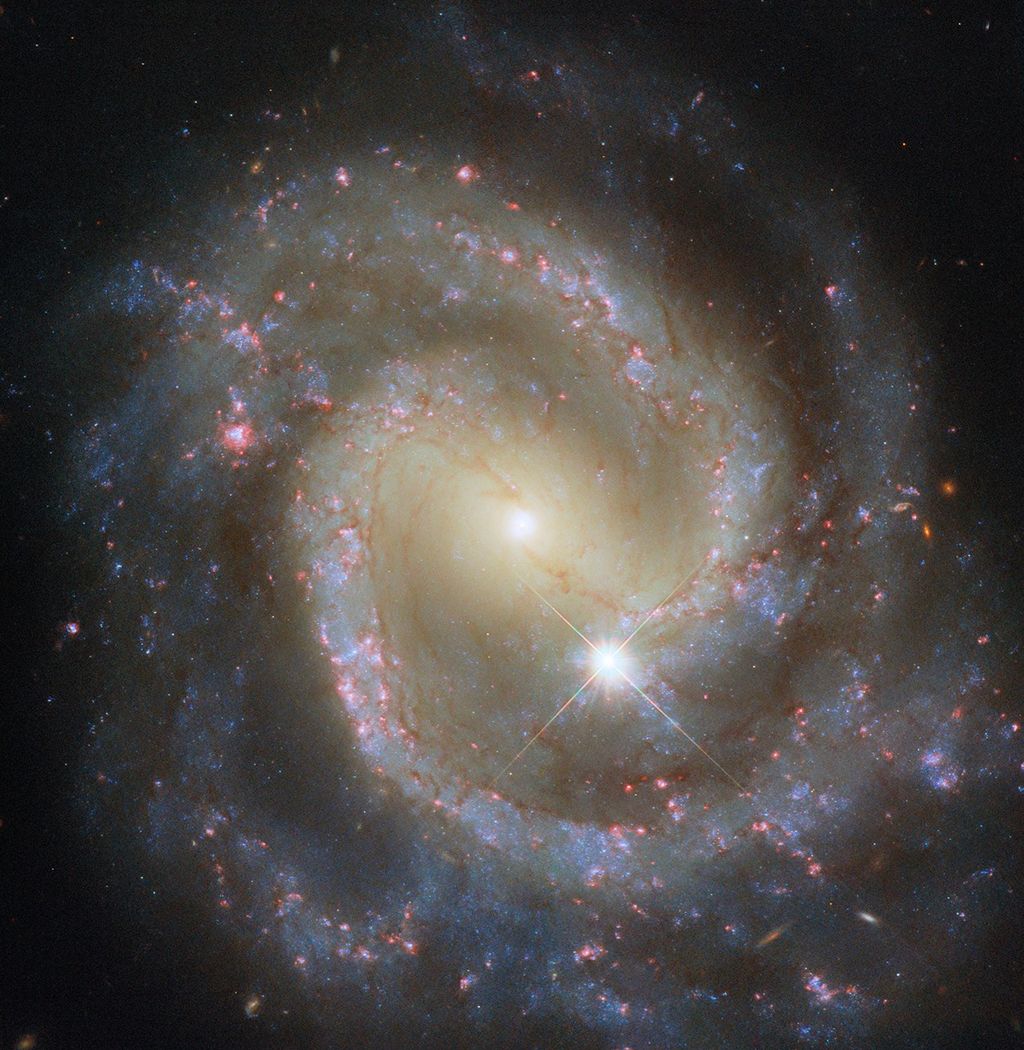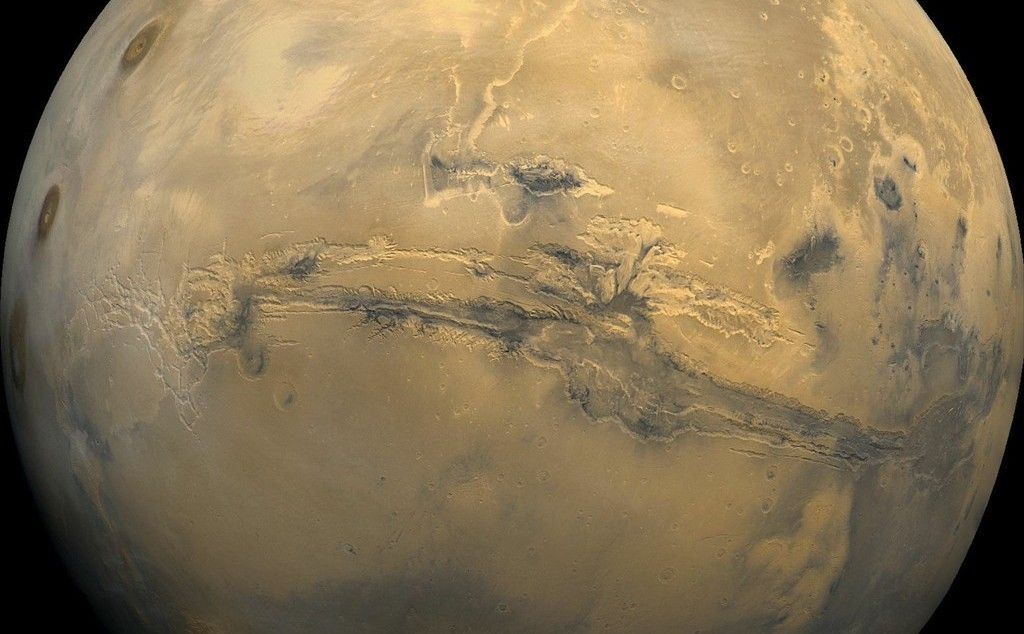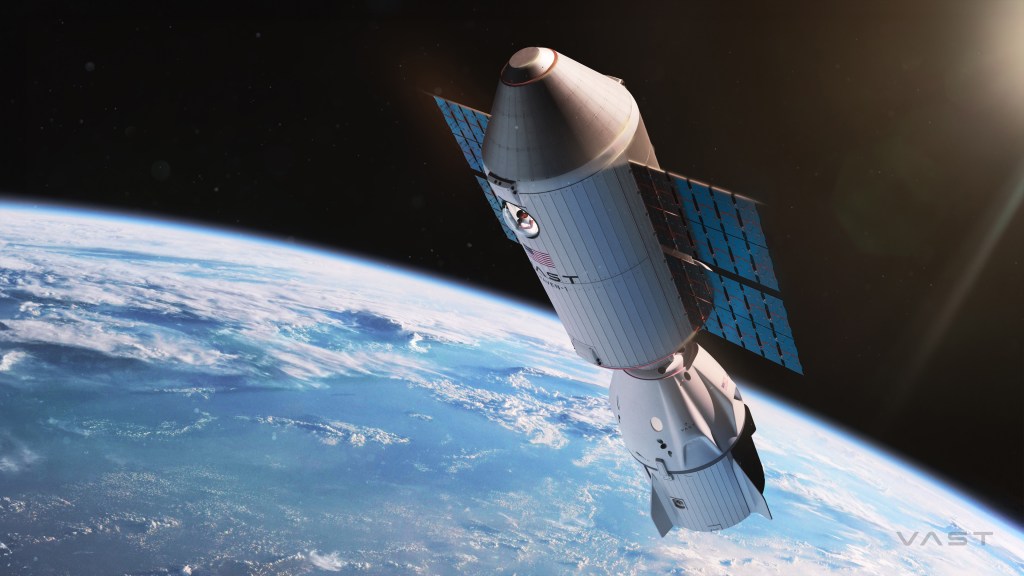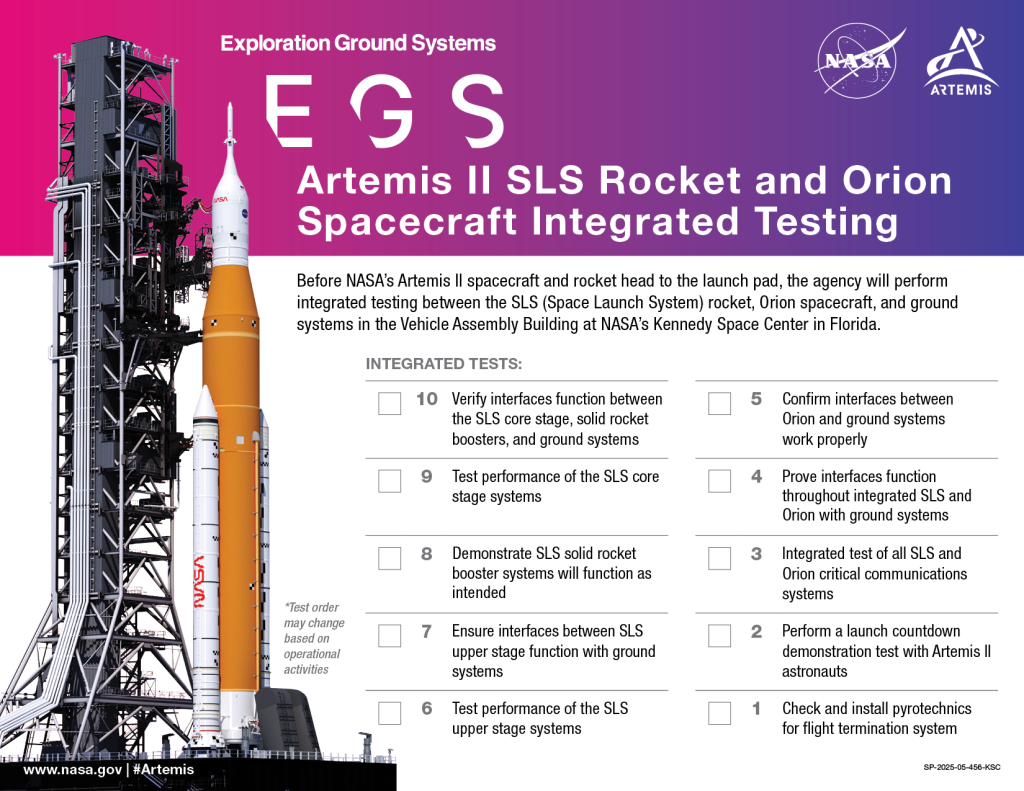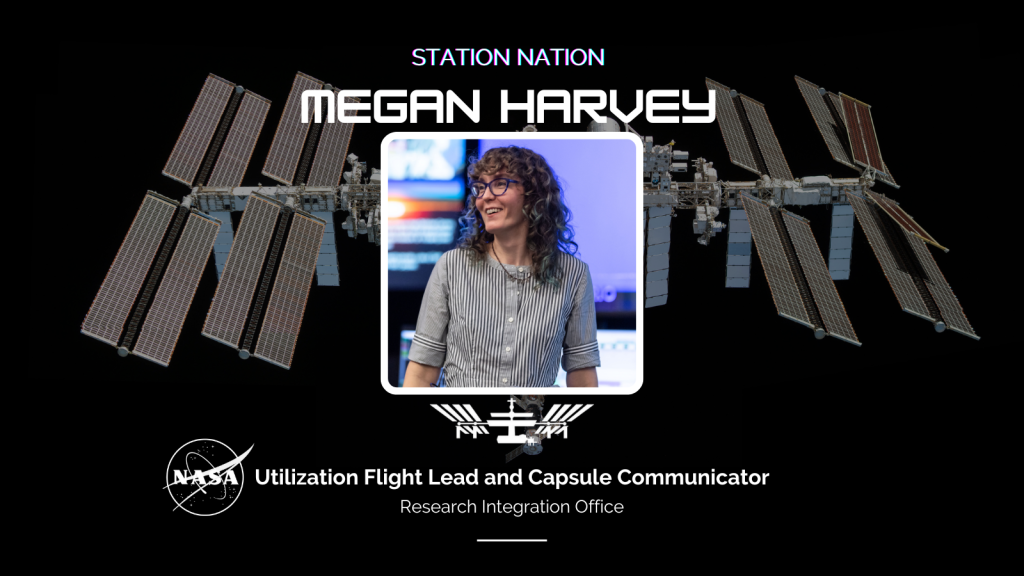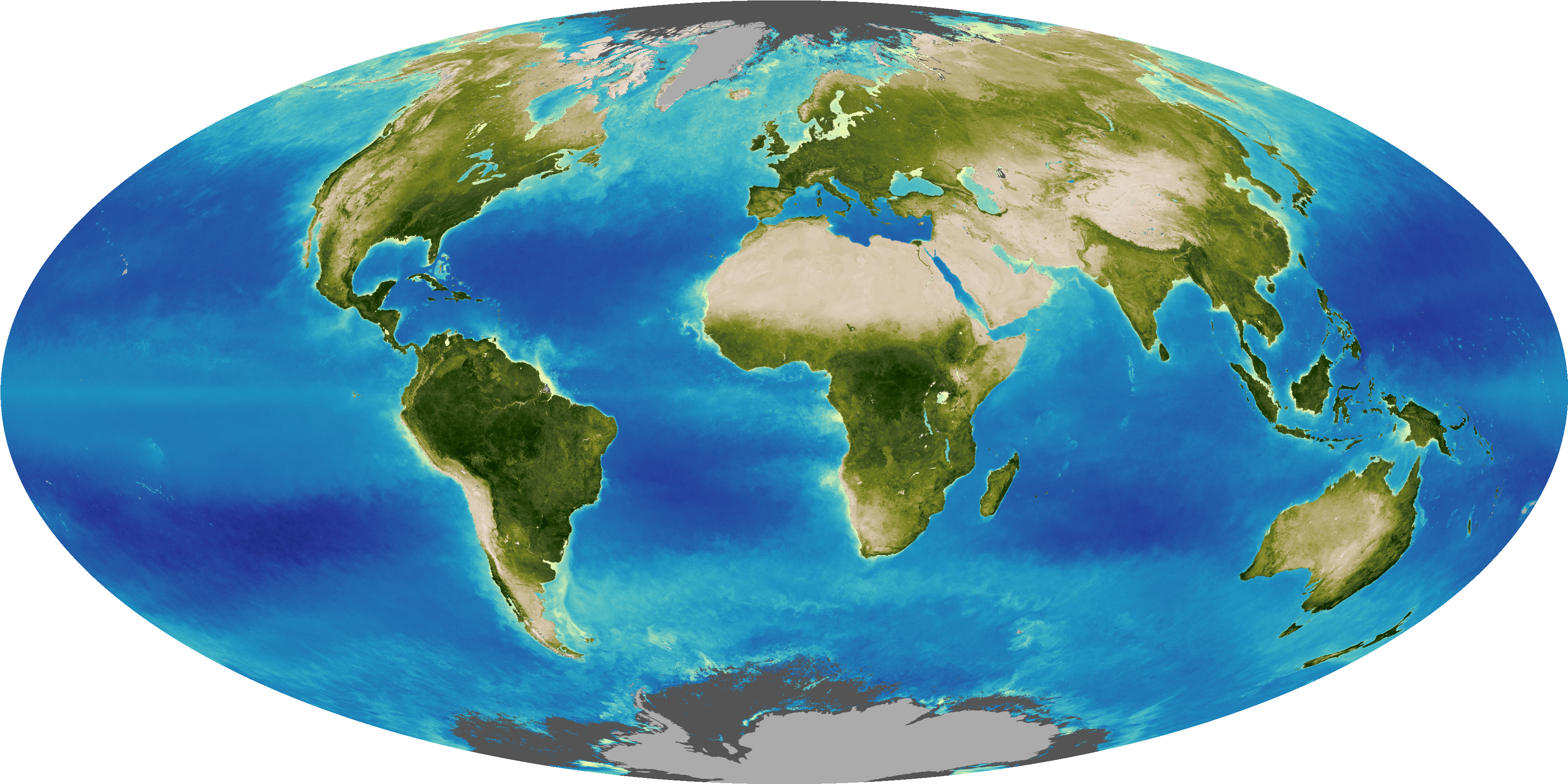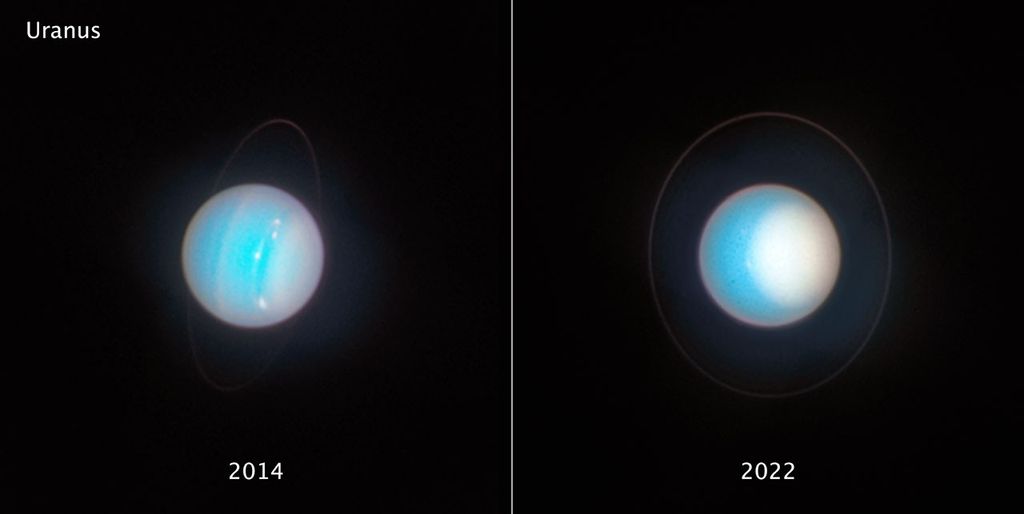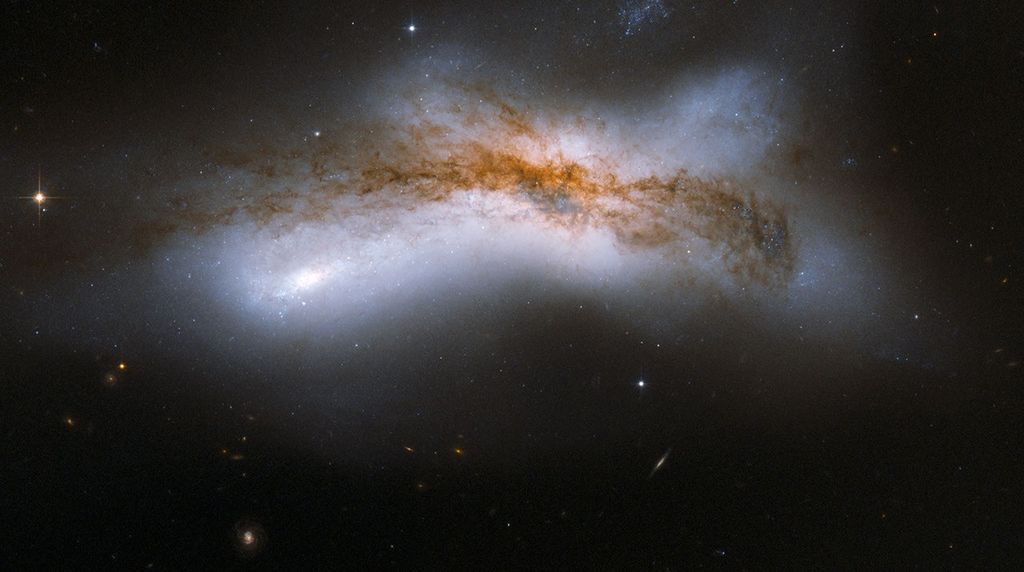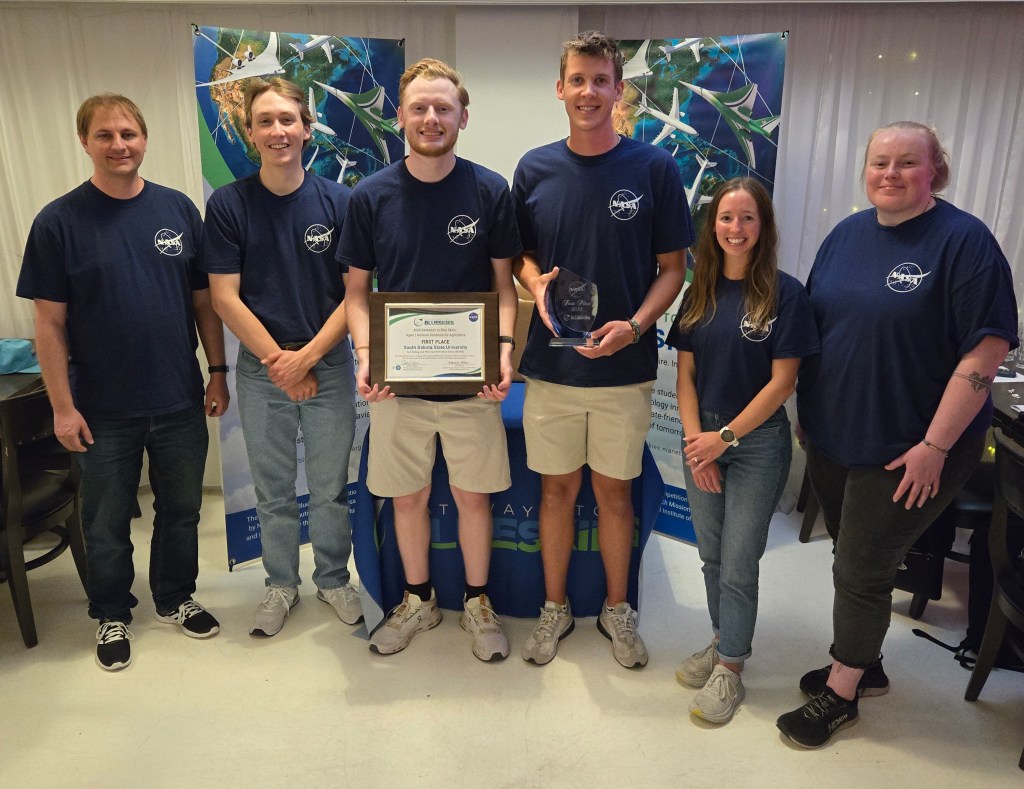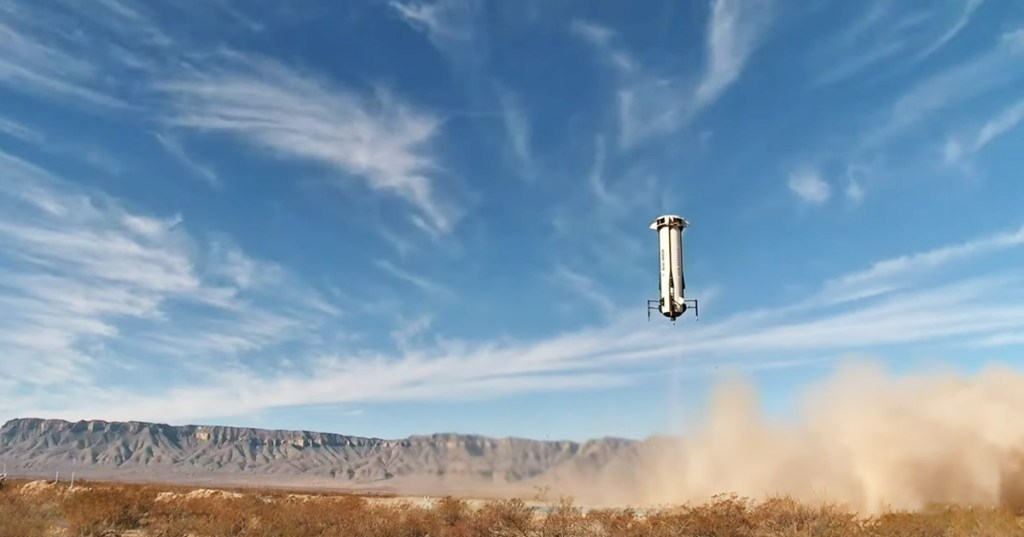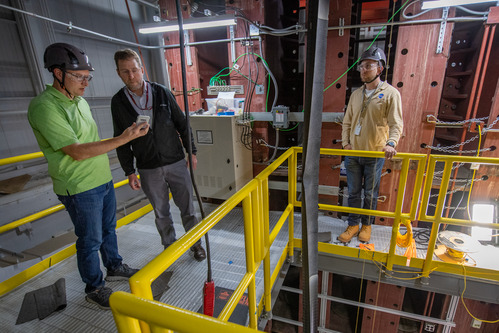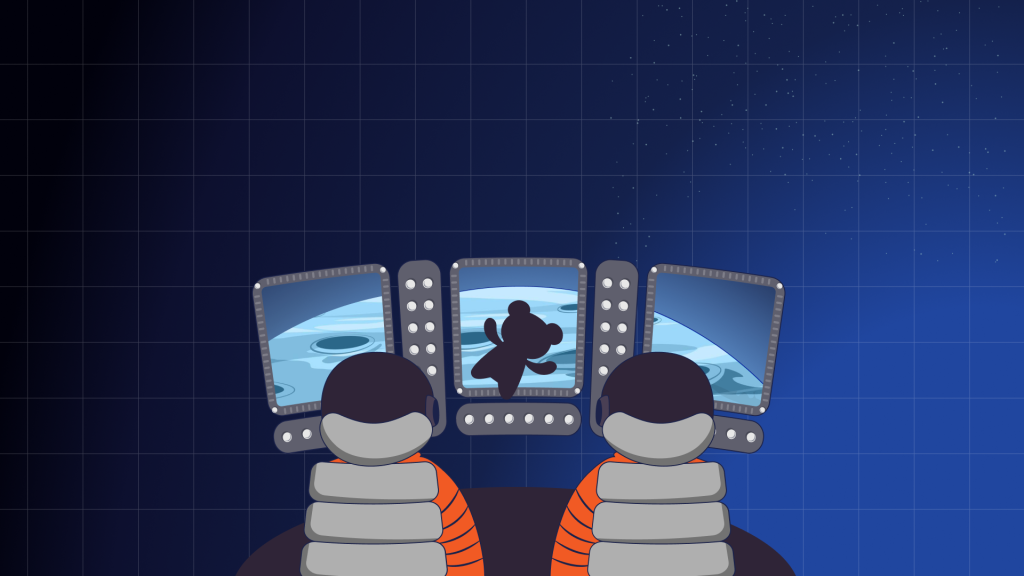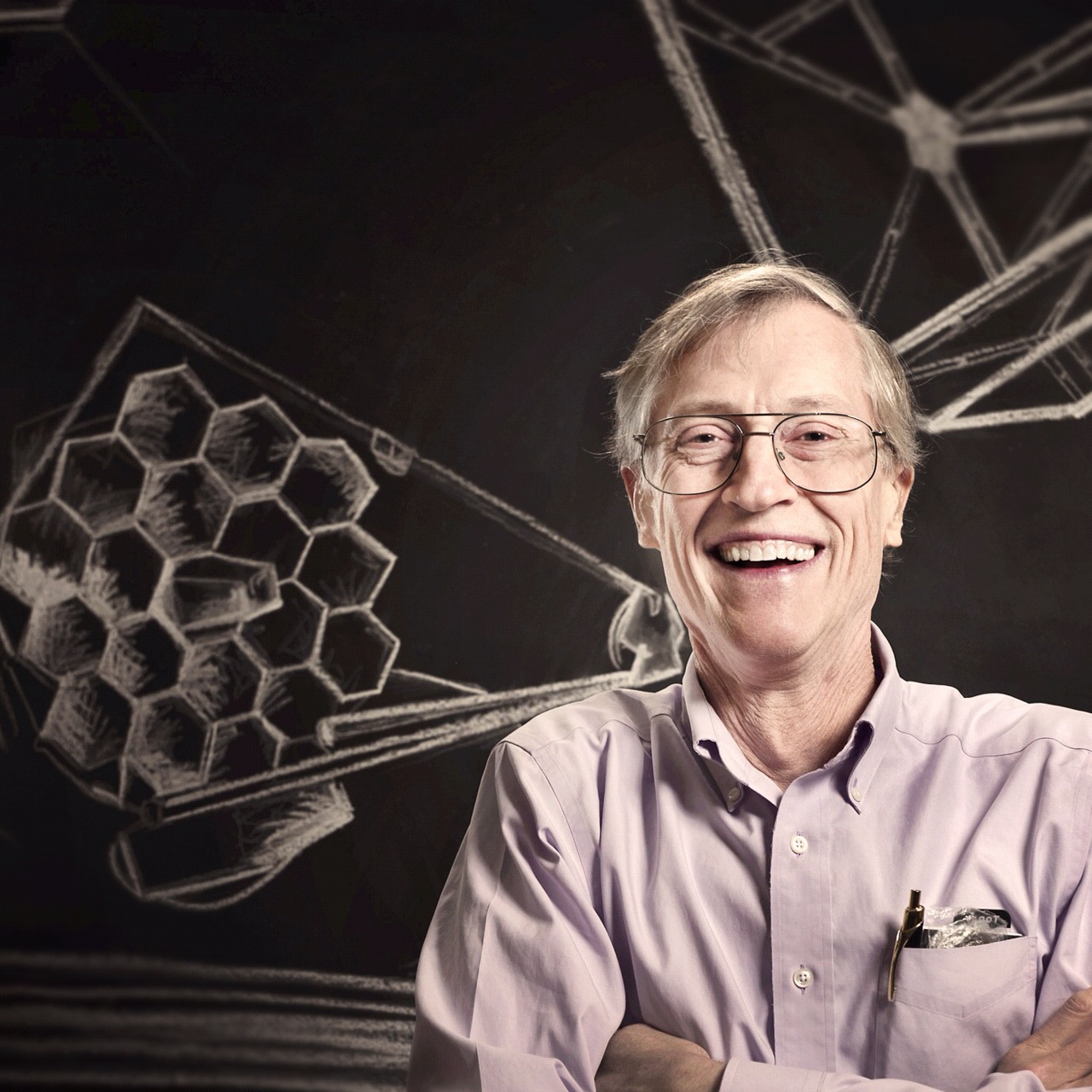
The James Webb Space Telescope awed the world on July 12 with its first images and data. And it’s just getting started with its exploration of the cosmos. Dr. John Mather, the observatory’s senior project scientist, has been working toward this milestone for more than 25 years. Before Webb, he worked on a spacecraft that delivered a groundbreaking baby picture of the universe and offered the best evidence yet that the universe began with a rapid expansion we call the big bang. Dr. Mather describes some of the first images and explains the mysteries that Webb will tackle.
Jim Green:We just saw spectacular images from the James Webb Space Telescope. Let’s talk to an expert and find out all the other things that it can do.
John Mather:Everything from here in the solar system all the way out as far back as you can possibly go in time to tell the story of the universe, how did it go from the big bang to people?
Jim Green:Hi, I’m Jim Green, and this Gravity Assist, NASA’s interplanetary talk show. We’re going to explore the inside workings of NASA and meet fascinating people who make space missions happen.
Jim Green:I’m here with Dr. John Mather, and he is the senior project scientist for the James Webb Space Telescope, which of course, just released its first spectacular images earlier this month. John is based at NASA’s Goddard Space Flight Center in Greenbelt, Maryland. Welcome, John, to Gravity Assist.
John Mather:Thank you, Jim.
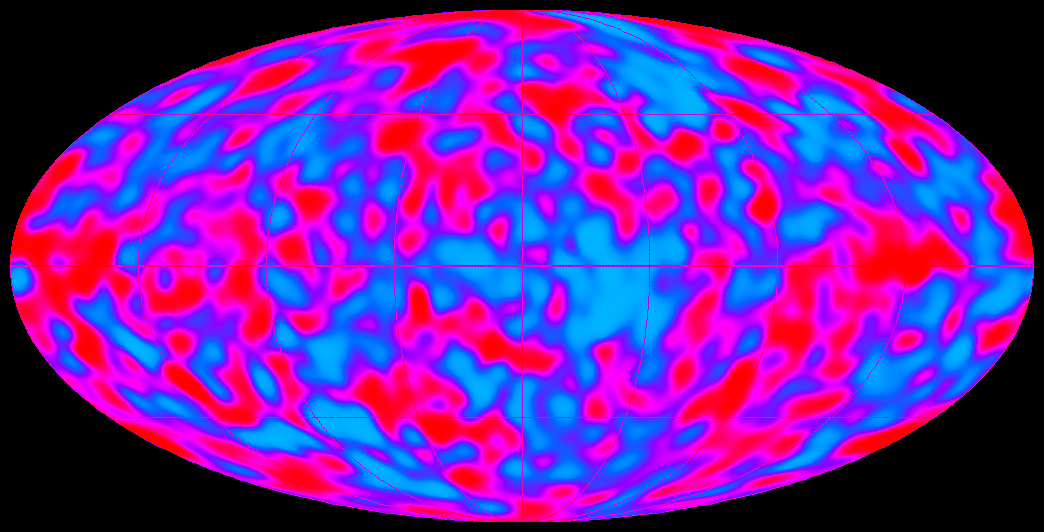
Jim Green:It’s really an honor to have you here. And I know you’ve had a long career at NASA much like I have, and experienced so many fantastic things. And so I’d like to talk about a couple of them. One of which, of course, is COBE. This was one of your first major missions, and of course, in a wonderful way that led to your Nobel Prize. So can you give me a little background about COBE?
John Mather:Sure, well COBE was the Cosmic Background Explorer satellite, and it was proposed back in 1974, to measure the big bang . So what’s it mean to measure the big bang? It means measure the cosmic microwave background radiation, which fills the entire universe now. And is evidence of the conditions at the very earliest moments, whatever they were. So task number one, see, is it the right color? Is it colorless in the sense of matching up a theoretical curve called a black body spectrum? And, and it is. Number two, is it the same in every direction? And the answer is almost, but not quite. And that’s really important because we interpret the hot and cold spots that we saw on the map, to say those come from the big bang itself, whatever the big bang really was. And they made the universe not exactly smooth and not exactly uniform, and because of that we are here.
John Mather:So when we showed the map to the to the world, Stephen Hawking said “Well, that’s the most important scientific discovery of the century, if not of all time!”
Jim Green:(laughs)
John Mather:Oh, okay, Stephen, why is that so important? Well, number one, we think that gravity acting on those primordial spots was able to turn around the expanding universe in places and cause the formation of galaxies and stars and eventually leading to planets and people. So we’re here because of that. Number two, most of those spots are coming from something astronomers had recognized, but nobody can see. It’s called cosmic dark matter. And so, okay, so we now are able to measure the cosmic dark matter by its effects on that map. And, number three, the pattern is affected somewhat by the cosmic dark energy, which also astronomers can detect but cannot see. So that tells us the expansion history of the universe. That’s pretty important to our story. And finally, if we ever could figure out what made this spots, we would be thrilled because it would tell us something about quantum gravity, which is one of the biggest open questions of physics today.
Jim Green:Did COBE prove the big bang happened? Or were there some sort of indications prior to that?
John Mather:Nothing can actually prove the big bang, we can always disprove something. So there was one major alternative theory to the we call the big bang the expanding universe, and it was called the steady state theory. And it had some very strange and interesting predictions, but it was definitely not in agreement with observations after we got them with the COBE satellite. So the big bang or the expanding universe, as I call it, is the remaining theory. What’s interesting is what was it like in the very earliest moments? So we can still argue a lot about what happened when the temperature was incredibly high, and the density was incredibly high. But there was something extreme in those first sub-microseconds, and that’s what I call the big bang
Jim Green:Well, what is happening in the early part of the universe that James Webb is going to be able to tease out? You know, it looks in the infrared and also looks back in time!
John Mather:Well, the Webb telescope does look back in time by looking at things that are far away. Light takes a long time to get here from there. So we can look back on not quite all the way towards the beginning. But if nature gave us an object to look at, then we should be able to see it as soon as 50 or 100 million years after the expansion started up. So those primordial objects are purely predicted at the moment. Nobody’s ever seen them. But we built the Webb telescope so that we could if they are there.
John Mather:By the way, when we’re talking about the size of the universe, the universe as a whole is probably infinite, so it doesn’t really have a size. The part that we can see is 13.7 or 13 point 8 billion light-years in dimension at the moment, or it was when the light was sent to us. So that’s a little tricky bit too, because of course, everything’s been moving and changing ever since the light came.
John Mather: But in any rate, our job with the Webb telescope is looking as far back towards that moment to into what we call the Cosmic Dark Ages, to see the first luminous objects that grew out of that primordial material. So they could have been stars, they could have been galaxies that came together, before the stars grew, they could have been black holes, there even are stories about how black holes could grow out of that primordial material. It’s even logically possible that there are some left from the big bang itself. Although nobody has figured that one out, we’ve never seen a real signs of them. But what about that? So that’s sort of number one cosmological objective is to see back as far as possible in time.
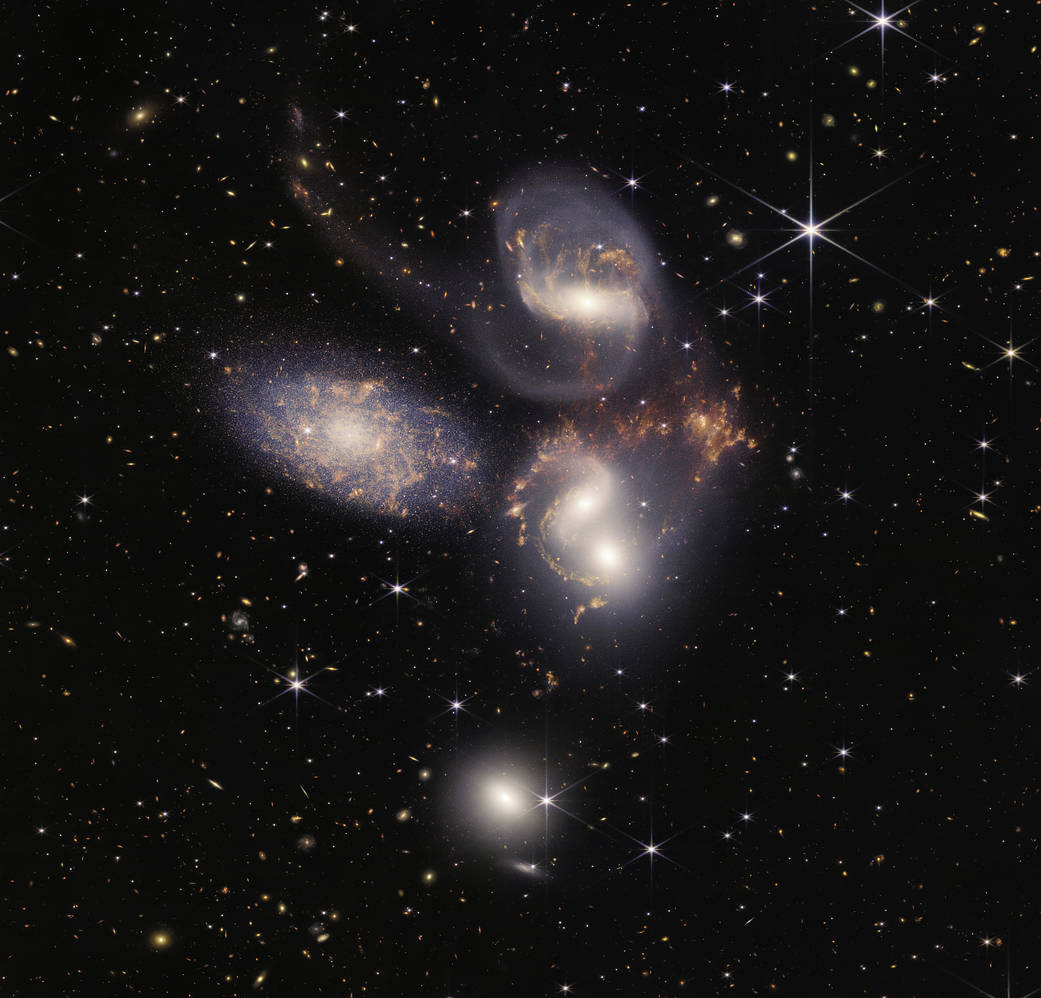
Jim Green:It really sounds to me, like you as cosmologists are following a series of missions that then build on one another. How did you personally go from working on COBE to then getting involved in the James Webb Space Telescope?
John Mather:Well, it was not my plan, actually. Somebody else was already working on this new telescope concept. And COBE was more or less done. And I think, “what am I going to do next that’s as good as that?” And I got a phone message from NASA Headquarters, from Ed Weiler and “we’re going to start a study of this new telescope, do you want to work on it? And if we do, then I need a proposal from you tomorrow.”
Jim Green:(laughs)
John Mather:So he knew that he had something to push and that it was time to start. So of course, I called up the people they told me to talk to and we sent in the proposal, and we got rolling. So I had no idea how hard this mission would be, or how long it would take. But I just could tell this was the most important thing I could possibly be working on, as a follow up to the COBE satellite.
Jim Green:What was the original questions that you were scientifically trying to answer with this new telescope that you were conceptually working on?
John Mather:Well, right away, we knew there were many questions it could answer because it would be doing something no one ever could ever possibly do in any other way. We knew we needed an infrared telescope. So why infrared? Well, number one, it’s now technically possible. And it’s never been possible before. Because we have the in the capability of cooling things down, we have the capable amount ability of launching a telescope into space that would be much larger than ever we tried before. And the Hubble can’t do it. Because the Hubble emits infrared light. The ground telescopes can’t do it because they emit infrared and the sky is kind of dark or bright or opaque one way or the other. So you can’t do it from here. So this is all going to be a big mystery until we can get telescopes into space to do this work.
John Mather:So what are you going to be able to do not only look back and farther in time, but also look inside and dust clouds where stars are being born today. We didn’t even know yet there would be so many planets at the time. In 1995, just we were just discovering the very, very first planets around other stars. So now we know most stars have planets and we did make a few adjustments to the mission concept so we could study them too.
John Mather:So anyway, basically everything from here in the solar system all the way out as far back as you can possibly go in time to tell the story of the universe, how did it go from the big bang to people?
Jim Green:It’s going to be an amazing story as we put in more of the puzzle pieces, and figure out what’s happening. Well, did Webb originally have these big mirrors that were segmented? Or was it you know, what, what was the original thought? How do you compare those early concepts with what we have today?
John Mather:Early concepts actually resemble the one we have today very closely.
Jim Green:Really? Wow!
John Mather:There were different ways you can fold up the segmented telescope. But we knew right away, we had to have a big sunshade because the telescope has to be cold. We knew we couldn’t keep the telescope near Earth. Because the Earth is always warm, and it’s always getting in the way. So you couldn’t keep the telescope cool near Earth. Okay, push it far away, where’s the next place to go? It’s called the Lagrange point 2, it’s a million miles out there. But it’s a great place if you can get there. On the other hand, “if you can get there” means “use a rocket you can get.” And that means the telescope is going to be pretty different. It’s going to be ultra-light, the mass of the telescope is half of what the Hubble was, is.
Jim Green:Wow.
John Mather:It’s a huge challenge. But the basic sketch that we drew is pretty similar to what we actually flew.
Jim Green:So John, as you’re going along, helping put this telescope together, when did it happen that you thought, “hey, we’ve turned the corner, and this is gonna work!” Did that ever occur?
John Mather:I think I always knew this was going to work.
Jim Green:(laughs)
Jim Green:And the reason for that is, we have a brilliant engineering system for keeping track of everything that might go wrong. And if anybody has a worry about it, they speak up. And we talk about it and make sure we fix whatever that was. And so from the beginning to the end, we’ve had project managers and support from NASA Headquarters that said, “Yeah, that’s the right thing to do.” We’re not cutting corners on this, we’re going to do it right. So, on the other hand, I was just sitting there quite calmly at launch, and I was just happy to watch it go up. Now, when we finally got to the image release, oh, my gosh, all the things that could go wrong, suddenly, they come flooding into my mind and this is like, I’ve been walking along the edge of a cliff for 25 years, and I didn’t fall off.
Jim Green:I mean, we were all waiting in bated breaths for July 12 to come around. And, and I have to tell you, I was just blown away. And I’m sure you felt that, too. So what were some of your impressions when you first saw this data coming in?
John Mather:Well, my goodness, I was like, almost everybody else. I had not seen them until they were polished. And so we went from, more than two decades of “is it really going to work?” to “it is so spectacular.” And the pictures are so beautiful. And everything we said we were going to do that seemed impossible, we’re doing it.
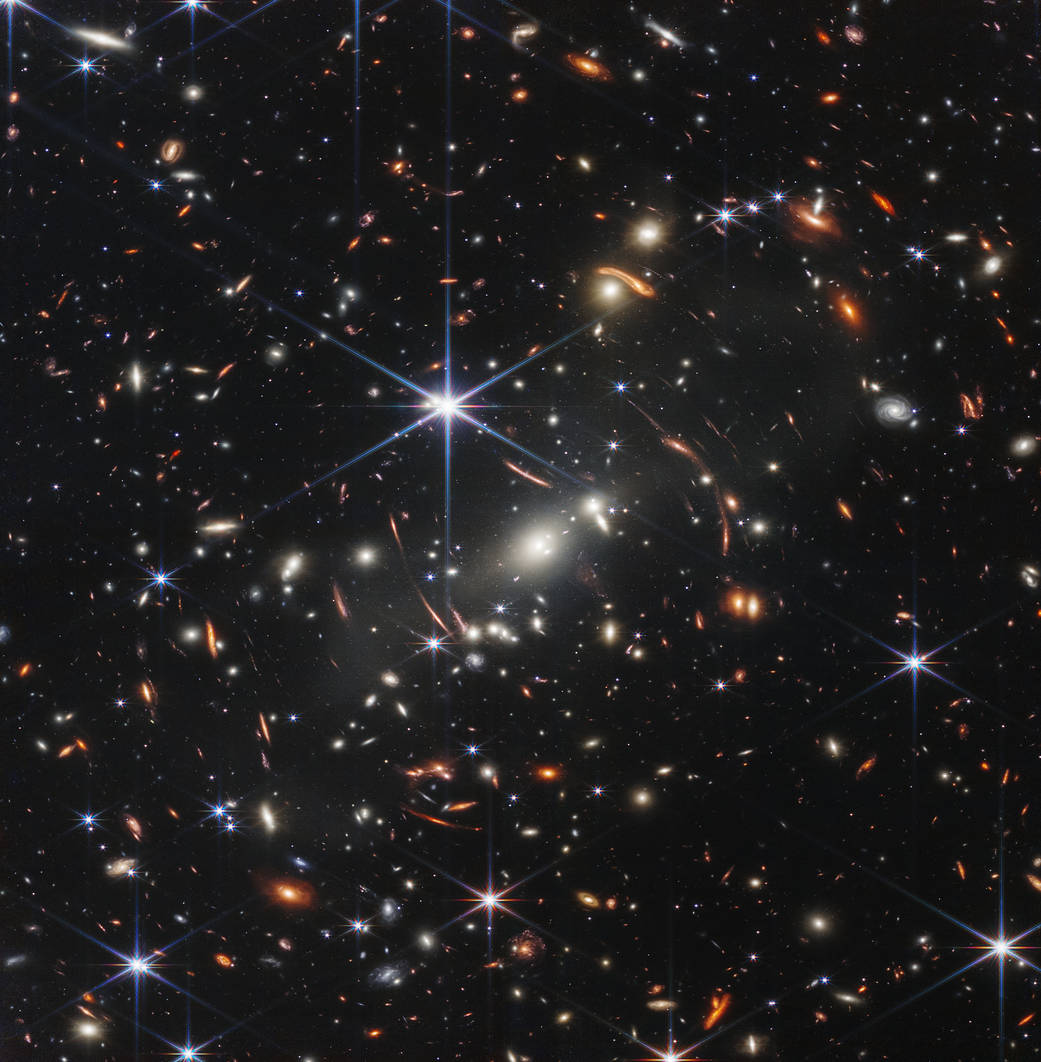
Jim Green:Yeah, I know!
John Mather:So there we are. The Stephan’s Quintet showed yes, yes, you can see, as much far back towards the beginning of time, as we said. There’s a black hole in one of them. And you can study the black hole, called an active galactic nucleus. There’s a galaxy that’s closer than the others in the picture. And we can see that it’s all sort of pimply because you’re seeing individual stars.
Jim Green:I know, that just blew me away when I saw that, yeah.
John Mather:That’s a category of stars that jumps out because they’re red. And so the infrared telescope picks them up very well. Then we got the picture of the Carina Nebula, where stars are being born as we speak, and there are hundreds of them being born inside that cloud. And so you need a tour guide to be able to find all the cool things in that one. And so anyway, we are so thrilled that it’s not only working on doing the science, but it’s pretty to look at.
Jim Green:It is. You know, to me, the beauty in the images, in all of them are in the details, the ability to then zoom in, I mean, the deep field image, where the distant galaxies are just popping out all over the place, is really startling. Now, what surprised me about that, in these early galaxies, is many of them have already evolved into a spiral- like or flat, flattened, wheel-like surface, as it is rotating around their center. What were your thoughts about the deep field?
John Mather:Oh, well, number one, it’s what we said it would be. There are galaxies everywhere.
Jim Green:(laughs) There are galaxies everywhere. (laughs)
John Mather:When we said the Hubble picture, the Hubble Deep Field was great, but not far enough, what we expected was the things that are the farthest away the hardest to see, they’re just going to be the tiniest little infrared specks. And now the Webb telescope can see them and say what’s in them? What are the chemical constituents of those little specks? As well as how far back are they in time? The tiny red specks — well, even the Webb telescope can’t see their shapes very much. But we can see that they’re there and see what they’re made of. We can count them, and see how many.
John Mather:So our current story is that our Milky Way galaxy, with its beautiful spiral shape is probably made of maybe 1,000 little bits that were pulled together over time. And we’ve still got two that are falling in, the Magellanic Clouds, right. But it’s really hard to work out the archaeology of the galaxy that we live in. So sometimes you can learn things by looking at other people’s galaxies, other people… Really, we don’t really know that there’s anybody out there.
Jim Green:(laughs)
John Mather:But why wouldn’t there be?
Jim Green:(laughs) Yeah, right! Of course, of course.
Jim Green:Are you on some teams right now studying certain aspects of what JWST is doing?
John Mather:Actually, I’m not I did not propose to observe with the telescope. You know, what I’d love to do is imagine new ways to build equipment. And so I’m onto what’s the next kind of equipment to build?
Jim Green:Wow, I did not know that. (laughs)
John Mather:Yeah, so I’ve got a couple of things in mind, started off about four years ago with an idea to make an orbiting starshade. So a starshade is conceived so you can see planets around other stars. And the problem that’s to solve is that the stars are incredibly bright compared to the planets. So there’s a huge amount of glare, so you can’t do it. So what do you do, you either have to build a perfect telescope and put a coronagraph in it in space, or put up a starshade with a less perfect telescope and cast a shadow of the star onto the telescope without blocking the planets.
John Mather:So this is a good hard problem. And I thought, when I heard about it, well, first, can we do it with the Webb telescope? And the answer was, well, that’s too hard right now. But what about the telescope on the ground? We have enormous telescopes coming on the ground, the biggest one is 39 meters across.
Jim Green:Wow.
John Mather:it’s six times as big as the Webb.
Jim Green:Wow.
John Mather:So we got to find a way to use it for that. So the upshot is, you could do this, if you could do a starshade 100 meters in diameter, and put it 170,000 kilometers away from Earth, so it can cast a shadow of the star onto the telescope. And then you have to line it up and keep it there for a while. So this is a good hard engineering problem, and it is not impossible. I am working on that. In fact, I got a nice support from Headquarters through the NIAC, this NASA Institute of Advanced Concepts,
Jim Green:Right.
John Mather:…to study what I’m calling the “hybrid observatory of Earth like exoplanets.” So we currently have a design challenge open on GrabCAD, GrabCAD.com. You can sign up and send us a drawing of how you think you could solve our problem.
Jim Green:That sounds fantastic, John. Yeah, those next new steps are really critical. And I find that the engineering community working with a scientific community are coming up with some really spectacular concepts. In fact as you say, that starshade has a very specific shape. And, it had to be determined by I guess, supercomputers or other methods of computation to determine that shape. Were you involved in some of that activity then, too?
John Mather:That initial work was a long time ago. We know what shape we need to build, but it’s just really hard to build it because it is so immense. 100 meters is bigger than the whole lot my house is on.
Jim Green:(laughs)
John Mather:So that’s hard, and it has to be pretty lightweight, which makes a good challenge. So that’s pretty cool.
John Mather:So that’s what I like to do. I love inventing things.
Jim Green:Well, that sounds fantastic. And as we can do these next generation telescopes, the ability to get to smaller planets is going to enable us to perhaps find something that’s more like Earth than we’ve ever seen before. So I’m tremendously excited about that.
Jim Green:And of course, what James Webb Space Telescope is going to be doing is helping us understand what that next generation telescopes will be, because it’s gonna be taking spectra of planets. And in fact, one of those first images was a spectrum of a Jupiter sized planet. That really got me excited.
Jim Green:I mean, this was just an exciting opportunity to then really tease out what the chemical composition is of an atmosphere.
Jim Green:The concept of being able to look at those exoplanets is critical, and also compare them with our own planets here in our solar system. So one of the first images in the solar system that have been released, of course, was of Jupiter, and its moon, actually several moons, but the one that was really exciting with a shad ow cast on the planet was Europa.
Jim Green:How’d you like that one, wasn’t it fantastic?
John Mather:Well it was lovely. It was, you know, we took that picture to just make sure the telescope would do that kind of picture. Because Jupiter’s incredibly bright, how are we going to know that we can see faint things next to bright things that the guide star system is going to work and all that. So that was a really important thing to prove that we could even make those observations. And then it’s so beautiful, because you see Europa you see Metis and other little satellites out there. So Europa is especially important for people because as you especially know, we’re sending a probe out there to pay more attention because it could have life in the ocean under the ice. So we’re going to be watching that one, especially from here. And you could even see with the telescope, it has a shape, it’s not just a little dot. And so we’ll be watching the places where the water comes spitting out of the cracks between the ice blocks to see is there anything interesting in the molecules coming out, and then it’ll be even better to fly through the plumes with a probe. But this is pretty cool.
John Mather:We’ll be looking at Titan too, I guess. Titan is an exciting thing to me. Because you know, people are always asking me, Are you sure the kind of life that we’re looking for is the right kind to look for? And so here on Earth, it’s all carbon based in liquid water solvent? Well, on Titan, there are an awful lot of geological or, Titanological things that are similar to here on Earth. They’ve got rain, and clouds and weather and rivers and lakes, and, but they’re made out of hydrocarbons, ethane, and methane, especially. So if it’s geologically possible for life to exist in a circumstance like that, well, that’s a pretty good place to look. So we’ll be watching that one to do the chemistry from a distance with our infrared spectroscopy. And the surface may have different chemistry in different places. And as we are really thrilled to do NASA is going to send a probe out there to land on this lovely satellite in a helicopter.
Jim Green:Yeah, in addition to that, all those other missions that we talked about, like the Europa Clipper, that’ll be launched in a few years, make it to Europa and do these fabulous studies up close and personal, while JWST is looking at the context. And also for Dragonfly, which will be launched at the end of this decade and make it to Titan, a moon of Saturn, that will also be observing and running around on Titan at the same time JWST will be observing it. So the overlap of these missions to me is just excitingly important, and in it really enables Webb to be so versatile. But are you excited more about one set of science than any other on Webb?
John Mather:I’m excited about two things that I think we really could get surprises from one is the very early universe because we’ve never seen that stuff at all. Something could be going on that just doesn’t fit the standard story. And we would never know if we don’t look. So the Webb telescope is going to look, is looking. And the other place we could get a big surprise is about all those planets. It could be an interesting surprise or a disappointment either way, what we have in the catalog, several dozen planets to observe through the transit technique to get their atmospheric characteristics. Well, the big ones are guaranteed to have atmospheres because that’s what they are. The little ones little rocky bodies size of Earth and the temperature of Earth — well, maybe they’re they’re rocks, and maybe they have atmosphere. And that’s a big number one question.
Jim Green:Yeah.
John Mather:And it tells us something about whether there could be life out there, we have a hope of seeing the signs of water on some little rocky planet. And on the other hand, it could be that, nah, nothing there. We have to build a different telescope to find out.
Jim Green:Right!
John Mather: Because Earth is actually a very special place. In our solar system, it’s the only place which we like. You couldn’t possibly live on Venus. Mars would require engineering support from home forever.
Jim Green:(laughs)
John Mather:And so what else you’re going to do? Earth is special. And we’re kind of disappointed and surprised that no other solar system like ours has turned up yet.
John Mather:Now it’s hard to find them anyway. But here we have in the solar system four little rocky planets near the sun and one of them’s the nice place for us. One of them might have been in the past, maybe the other one was too, Venus and Mars might have been habitable before. But then we got a gap and then we got four gaseous planets that are all chilly. So nothing like that’s turned up in the rest of the planetary systems we’ve found. So how come? So maybe Earth really is more special than we ever thought.
Jim Green:So John, I always like to ask my guests to tell me, you know, that person place or event that happened to them that really propelled them forward to become the scientist they are today. And I call that event a gravity assist. So John, what was your gravity assist?
John Mather:Well, I think back on my trajectory, of bouncing off various gravitational forces, and as far back as I can remember, I wanted to be a scientist. Even in third grade, I knew of scientists. I knew about Darwin and Galileo and I thought they did heroic things. People didn’t always like what they said. But that just proved to be how important it was. So my parents and my school system gave me many opportunities to try and expand my interests. So I grew up in the countryside, on an experimental farm, actually, of a university in New Jersey, Rutgers University. So I was a little bit exposed to science because my dad was a scientist, but he didn’t understand the physics part. He was studying dairy cows. So that was pretty remarkable. At any rate, I had many opportunities from family, from school, to try hard things.
John Mather:So sometimes I tried them and I succeeded. And that gave me a little bit of a boost to say, okay, maybe Galileo and Darwin could do great things. Maybe I could do something too. So somehow I got enough encouragement to think well, maybe you can’t do it, maybe you can, but why not try. So I put my heart into becoming a scientist all along, starting quite young.
John Mather:Quite a lot of the time of a scientist is thinking about things that are not working, we have to be very tolerant of, “gee, I haven’t solved this problem yet.” And, gee, somebody else might be ahead of me. And a lot of other things like that, that seem intimidating. But it is part of being in the process of organized curiosity. So in the end, you get to see huge results. When you look at the house that you might live in, you say, “where did this all come from?” This is based on scientific principles, implemented by engineers and society. So but it’s still nice to be able to say, you know, that paint on the wall, those elements came from stars. The wall itself came from inside stars. The chemical elements in my body came from inside stars. And how did that all work? Well, let’s find out.
Jim Green:Thanks, John, for joining me and discussing how you got involved in this fabulous JWST. It was really quite an honor to have this opportunity to chat with you today.
John Mather:Thank you, Jim. I never could have imagined this whole trajectory, no matter how many gravity assists there are. It was fun talking with you.
Jim Green:Well, join me next time as we continue our journey to look under the hood at NASA and see how we do what we do. I’m Jim Green, and this is your gravity assist.
Credits
Lead producer: Elizabeth Landau
Audio engineer: Manny Cooper

